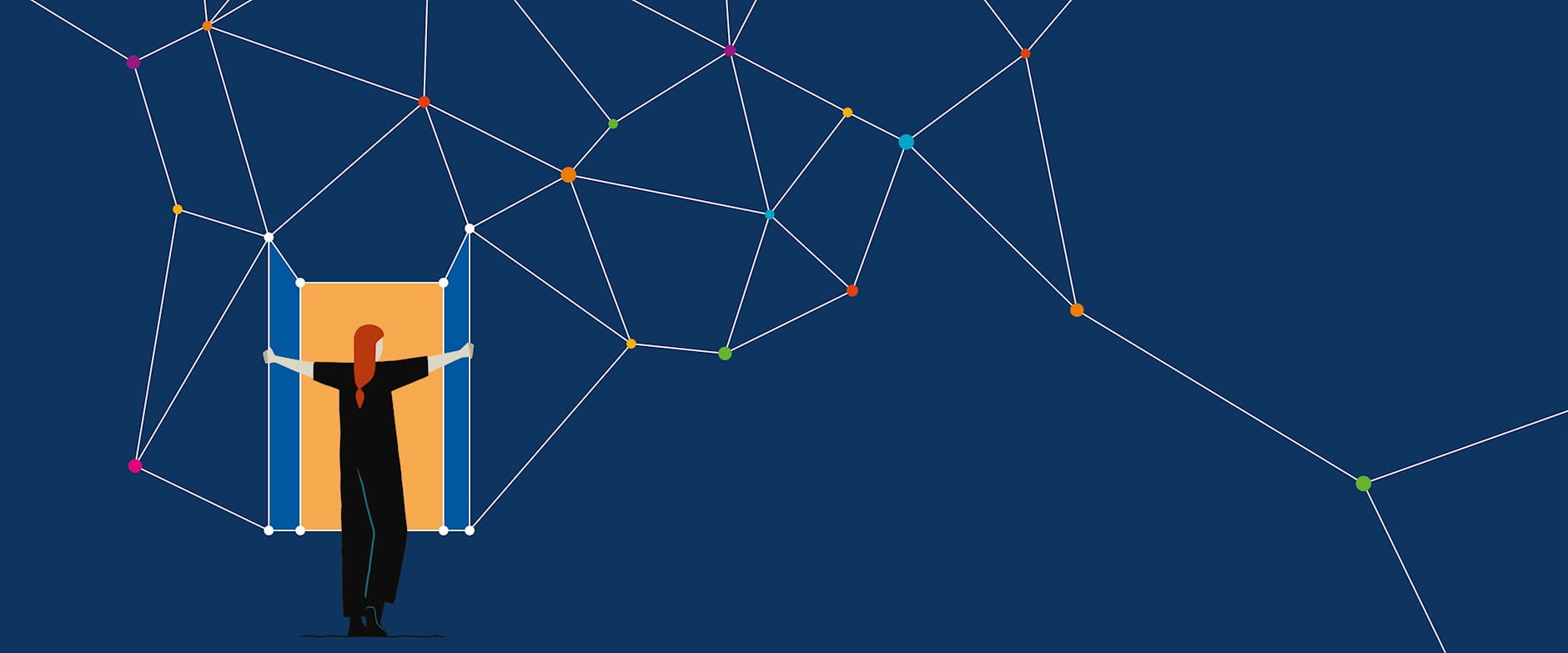Chicago Booth’s Ronald S. Burt was in London one morning in 2016 reading the Times when he was struck by an image in the newspaper. It was a map that showed where the recent Brexit vote, for the United Kingdom to leave the European Union, had been strongest. People in poorer regions had tended to vote “Leave,” while those in richer London, Manchester, and Edinburgh wanted to stay.
The image reminded him of another map, from a paper he often used in teaching, in which technology entrepreneur Nathan Eagle, Cornell’s Michael Macy, and British Telecom’s Rob Claxton had visualized the UK’s telephone networks, showing that people who called a greater range of phone numbers over the course of a month in 2005 tended to live in more prosperous regions. The volume of phone calls made no difference—it was the diversity of people being called that tracked economic indicators,
and that those people were not in contact themselves: in other words, that Andrew had Betty and Calvin in his call list, but Betty and Calvin never phoned each other.
As a sociologist, Burt has demonstrated over decades that diverse networks of contacts help individuals thrive on a range of fronts—from salary levels and promotions to the chances of leading a successful start-up to the ability to think strategically. Your LinkedIn account is your fate.
The paper he shared with his classes was his own work scaled: quantitative evidence from a team of social and computer scientists suggesting that this relationship might persist at a community level. What Burt realized that morning is that the two maps—in the Times and from the research paper—suggested a less noted but potentially interesting relationship: between a person’s network diversity and their feelings about national borders. Your LinkedIn account is your country’s fate.
The research by Eagle, Macy, and Claxton did not probe causality, but Burt says today that he can see the correspondence between open networks (ecosystems in which people can gather diverse contacts and ideas) and relative economic prowess—and associated views on cross-border or cross-cultural cooperation—as running in two directions. Individuals in struggling industries or regions may be where they are because they failed to network. But just as likely, if you can’t imagine that your life will be validated in new and unfamiliar settings, it will inhibit your temptation to network. “Around the world, there is this huge residue of people left behind,” Burt argues—left behind economically and socially. And this feeds into tribalism. “If there is no hope, you find solace in people like yourself.”
This jump between the Rolodex and politics may feel too big, but Burt is not the only person making it. Studies over the past several decades have focused on benefits to individuals and the economy of putting your head above the parapet: cross-fertilization promotes innovation and growth. Now a growing body of evidence from sociology, psychology, economics, and management goes further, suggesting that stepping out of our social bubbles is fundamental to social cohesion, and that networking—that exhausting, cringe-worthy schmoozing so many of us were happy to drop in the name of COVID-19 social distancing—is a good way, maybe even the best way, of taking that step.
Not your father’s networking
Isabelle Feng, a 31-year-old second-year consultant in San Francisco, started her previous career eight years ago at one of China’s biggest financial-news producers, where she was tasked with bringing domestic business stories to global audiences and international stories home. Building bridges was a way of operating in the world that felt natural to her—professionally and personally, as well as in that grey zone between the two. “I used to love to say to an acquaintance, ‘I know this person who does what you do; maybe I can connect you,’” she says.
This impulse was part of what drove Feng to earn her MBA in the United States, but it has been sapped by the COVID-19 pandemic. She landed her current position in summer 2020, and spent the first year and a half working from home. As a result, she doesn’t feel she has a firm grasp of the company’s culture, and wonders if her class of new hires will ever catch up or change the paradigm. Most of all, she can’t get excited about nurturing the network of loose contacts that once gave her such pleasure and purpose. “I know I have to relearn that,” Feng says late one night over Zoom. “I need to do it for my career. I need to do it for my life here, locally, too.”
Specialists in the science of networking agree. Network theory since the 1950s has demonstrated that the number and nature of our relationships with others can affect our behavior and success in the world. The importance of weak social links emerged in the research relatively soon after. In an influential 1973 paper that analyzed, among other situations, longtime Italian American residents in Boston’s West End struggling to hold gentrification at bay, Stanford sociologist Mark S. Granovetter argued that ideas are adapted more quickly when conveyed by people with many weak ties, as opposed to members of tightly knit groups, who tend to send information into cul-de-sacs. On this basis, Granovetter wrote, mobility in one’s career is better supported by weak than strong ties, and activism is least effective in communities partitioned by cliques.
In the 1990s, Burt completed this argument by looking not just at the ties between people, but the absence thereof—structural holes in the network, in his words. Burt described a network structure in which “brokers” use insider information from one in-group to solve problems or enhance life outside that setting. These connectors are not like the glad-handing networkers of the contemporary imagination in several senses. The benefits they get from this work are indirect—higher wages or better job opportunities thanks to their reputation for delivering fresh insights, rather than promotions arranged during rounds of golf with the boss.

